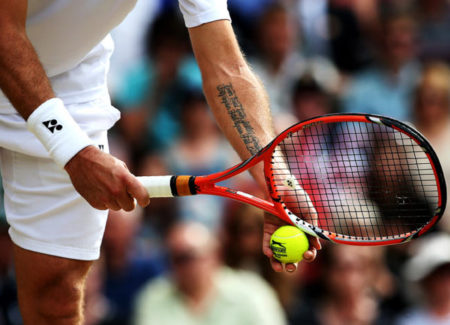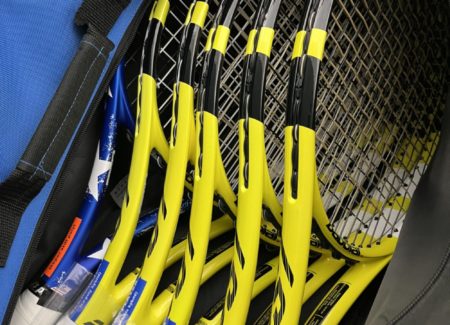Innovative Hybrids
There are hundreds and hundreds of different tennis strings out there on the market. Most of them are polyester and are horrible for the recreational/developing player. But don’t worry, I’ve done the work and sifted through this hot mess to figure out which strings work really well together to give you polyester-like performance without the ARM Blasting consequences.
Where does one start? You can find the hybrid that is named after your favorite pro player or the find pro player who uses the same racquet as you. I’ve created these to LOOK like your favorite tennis player’s string setups and gave them fun names for you to remember. These are arranged in order from the softest to the stiffest. So if you have a bad history of tendinitis just look at the first half of the hybrids.
until it breaks
$44+labor
-until it breaks
$44+labor
-until it breaks
$18+labor
-until it breaks
$14/24+labor
- until it breaks
$44+labor
until it breaks
$16+labor
-until it breaks
$21+labor
-until it breaks
$12+labor
-until it breaks
$26+labor
10-30hrs
$14+labor
20-30 hours
$18+labor
100+hours
$12+labor
until it breaks
$18+labor
until it breaks
$22+labor
1 week
FREE!
Terminology:
Natural Gut: comes from the cow. specifically, the part of its intestine called the serosa. It is produced by drying the serosa fibers which contains collagen designed to withstand the stretching and contraction of the intestine. It is this elasticity that makes the fibers useful for tennis string. It is also the first string to be used in a tennis racquet invented by Babolat in 1875!
Monofilament: a solid single extruded untwisted synthetic filament. Typically made of polyester, nylon or PEEK (polyetheretherketone).
Synthetic gut/Nylon: They’ve given it a fancy name of, “synthetic gut.” However these are all made of nylon. Typically manufactured with a monofilament core and a layer of outer wrap. However I do not call it “synthetic gut” because I believe it is a misleading term. I call it what it is, nylon.
Multifilament: these are also mostly made of nylons but I don’t call it a nylon because the manufactured structure of these can be quite complex. They can be a composed of hundreds or thousands of different filaments/fibers that are usually bonded or twisted together. Various materials are added to change the properties of the string but the result is typically a softer string. Mostly in attempt to mimic the properties of natural gut but honestly they don’t come close.
Polyester: they are made of exactly that, polyester. it was a revolutionary string when introduced in 1997 and the entire sport hasn’t looked back since. They claim polyester is more durable but that can be misleading. They may not notch and break as quickly as other strings but their usable lifespan is quite short. Some professionals don’t use them for more than 7 games in a match because they hit the ball so hard, effectively stretching the spring out of them. More recently they’ve rebranded them as “co-poly”. They claim since they mix so many other ingredients into it they can no longer simply call it, “polyester”. But don’t be fooled, it is still polyester.
Kevlar/Aramid: It’s also what bulletproof vests are made of. It is a synthetic fiber that is heat resistant and has tensile strength stronger than steel. When it is manufactured into tennis string, hundreds or thousands of fibers are twisted or braided to create the string. Almost effectively making it a multifilament but with almost unbreakable properties. Because of it’s enormously high tensile strength, it is also a VERY stiff string. Much stiffer than polyester however, when paired with a soft cross string and strung at low tensions, it has been proven to be a very high performing string. Andre Agassi was the first to use kevlar/aramid strings on tour in the 90s. He also popularized the mullet…















